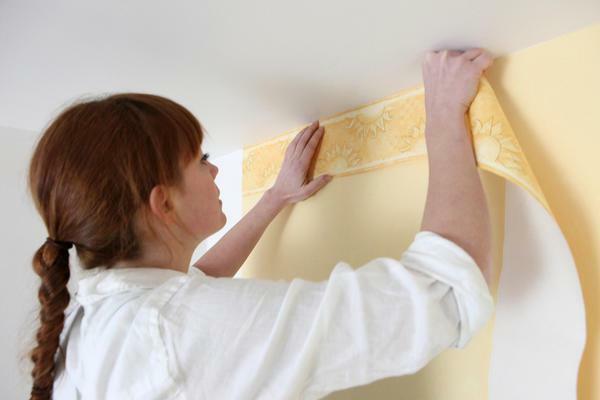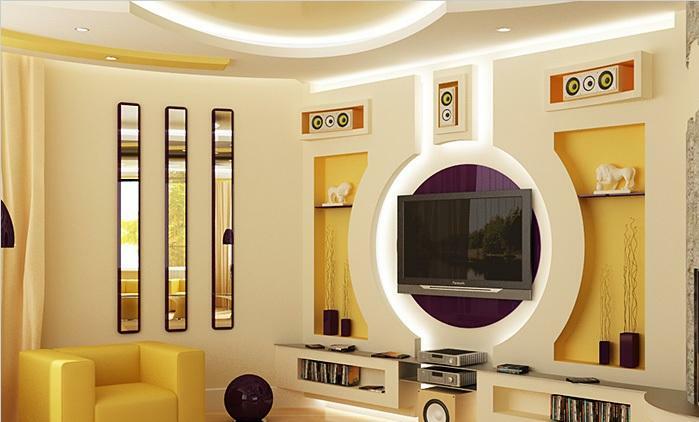Contents
- 1 Types of acrylic paints and how to use
- 2 Preparing walls for painting
- 3 How to paint walls with acrylic paints
What is acrylic paint for walls and its properties Thanks to acrylic paint, the painted surfaces acquire not only an attractive appearance, but also excellent wear resistance. In addition, painted walls and ceilings can be washed, and painting of walls and other surfaces can be carried out even in rooms with high humidity.
A characteristic feature of acrylic paint is its ability to tint, so the surfaces can be painted with shades of a wide variety of colors. Such paint can be painted not only prepared walls of premises, but also concrete surfaces, lime-cement plasters, brick walls, and also fiber-cement surfaces.
Acrylic paints have a number of undeniable advantages:
 • Resistance to temperature changes;
• Resistance to temperature changes;
• Constant appearance of the painted surface over time;
• Short drying time;
• Does not crack, the surface is perfectly smooth;
• Fire-resistant and practically non-toxic;
• Easy to apply to the required surface and economical. Acrylic paint can be diluted with water if necessary;
• Has excellent gas permeability.
The main components of acrylic paint are aqueous base, acrylic dispersion and pigment component. The composition of the paint also includes film-forming polyacrylates.
It should be noted that the basis for acrylic paint can be proacryl. It is a moisture-resistant matte acrylic paint, which includes ground marble and an aqueous dispersed base with acrylates. Such acrylic wall paints have a high level of hiding power and a water repellent effect.
Types of acrylic paints and methods of application
Acrylic water-based paint for wall painting has found wide application for internal work. This paint can easily paint the walls and ceiling. To do this, use brushes, various rollers or apply paint using a spray gun. Buy this paint can be in white, and to give different colors to it, various dyes are added.
Acrylic water-dispersion paint has all the characteristics of acrylic paints and can be used for painting interior surfaces of premises, and can also be used for outdoor works. It is recommended for painting walls and ceilings in living rooms, because it has practically no odors and is environmentally friendly.
Proacrylic paint is used for painting works inside the premises of dwellings, especially with high humidity. This applies to kitchens, bathrooms, toilets and others.
Acrylic paint for artistic wall painting is widely used to create beautiful unique drawings and masterpieces that create interior decoration and entourage in the rooms. The painting is very beautiful, which will make the housing unique. To preserve masterpieces for many years, instead of water, special binding solvents are used.
Preparing the walls for painting
For beautiful wall finishing, you can use not only wallpaper of different textures and colors, but also use acrylic paint for their decoration. It should be noted that painting the walls has several advantages.
Painted walls can be updated at any time or simply change their color. The same applies to minor repairs, in the event of accidental damage to walls or ceiling. If the house has small children, they can easily paint the walls with pens and pencils. This problem can easily be solved by several movements with a paint roller with paint on the wall.

In apartments with a small living space, designers also prefer to paint walls in white or pastel colors, which can visually increase the volume of rooms and non-residential premises.
Before applying acrylic paint to walls and ceiling, the surfaces to be painted must be prepared for painting. To do this, perform a number of works:
• First, the walls are freed from the old wallpaper. At the same time, care must be taken to ensure that even the smallest pieces do not remain. If the walls did not have wallpaper, then you need to remove the old plaster. The walls must be perfectly flat after preparation. Large differences can be leveled by plastering the surface using plasterboard sheets or starting plaster( isohypsum).
• After the rough finishing of the walls, they must be treated with a primer, and then proceed to a final finish. Here it is recommended to use a polymer mesh for putty, so that after finishing and painting the walls, the plaster and paint do not "break" and do not go cracked. First, the net is applied along the perimeter of the entire surface to be treated, and then a putty for fine finishing is applied to it.
• After the putty has dried on the walls and ceiling, sand the surfaces with a trowel or fine abrasive paper. After grinding, it is necessary to check the surfaces for irregularities, depressions, scratches, roughness and other defects that should be removed upon detection.
• By grinding walls and ceiling, it is necessary to achieve a perfectly flat surface without defects, since the latter are found after painting.
How to paint walls with acrylic paints
When carrying out painting work, remember that:
• After each work, carefully clean the tools to prevent them from drying out. This applies to brushes, sprayers, rollers, trays and other used tools;
• The container with paint must be tightly closed after use, so that it does not dry out, and no lumps or films form in the paint itself;
• Use acrylic paint in the container, from which the paint will be selected for work;
• Before diluting the paint, it is necessary to read the manufacturer's recommendations, which solvent can be used for this product, and whether water can be used.
Polished walls and ceiling must be covered with a primer coat before deep painting for deep impregnation of the surfaces to be painted and allowed to dry during the day. After completely drying the walls, you can start painting. At first, baguettes, cutters, corners of walls, joints of adjoining walls and ceiling are painted.
For perfectly flat lines, if you need them, you can use scotch tape. After the paint dries, it leaves, leaving a perfectly straight line behind it. The same goes for the different stencils that are also used in the work.
Staining can be done using wide brushes or various rollers. Painting of walls with acrylic paint by rollers is most convenient, since the maximum amount of area is covered. It is very convenient to use paint trays in which acrylic paint is poured. Here, on a special site, you can remove excess. On the question of how to paint without divorce?will help our advice on painting walls and ceiling.
For maximum effect, it is recommended to apply 2 ─ 3 layers of paint after the previous one has dried completely. After finishing the painting of the necessary surfaces in the room, the windows and doors should be kept closed to avoid drafts.


